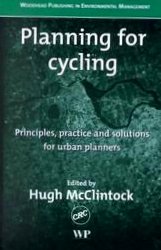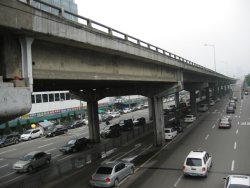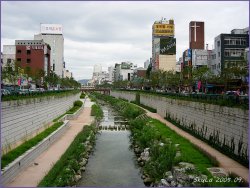
The judicial verdict is in on the sensational case of Michael Bryant. It sounds like a tragic case of a driver whose car’s stop/stall/roll action accidentally provoked an unstable bicycle courier, with tragic and ultimately fatal consequences. The driver appears to have behaved completely reasonably under the circumstances. The cyclist had a long history of aggressive confrontations and appears to have behaved in a threatening manner.
I take no issue with the facts of the case or the judgment. However, the incident has taken on large proportions in the media and the cycling community, and I find the official legal summary wanting in this regard. The crisp, neutral judicial language gives the document the air of Truth and Justice, when in fact it only represents The Law.
The document answers the legal problem at hand, a judgment on dangerous driving, and therefore focuses entirely on what constitutes “reasonable driver behaviour” under the circumstances. Lost in the context is what constitutes a reasonable cyclist’s reaction – and while the cyclist was not reasonable, an emotional reaction to having your rear wheel bumped is legitimate, and a subsequent furious reaction to being sent flying over the hood of the car is also fair. Because the document is necessarily focused on the Law, all such points on the public debate of cyclist/driver perspectives and emotions are out of the picture. Also lost in the discussion is any mention of the differences between car/car collisions from car/bike collisions – what may be a fender-bender in one context is an unnerving experience in the other, even if the vehicle doesn’t touch the cyclist’s skin, or if the vehicle is only going 13 km/h when it sends the cyclist flying over the hood.
The cycling community’s discontented reaction to the case stems from a desire for the driver world to “please understand our feelings!” Unfortunately, this particular cyclist’s aggressiveness makes it an unlikely to elicit any soul-searching. Note however the pattern: whether the cyclist is in the wrong (this case) or in the right (2008 story with a cyclist’s amputated leg), the cyclist will always be the one who gets injured or killed.
The morals: cyclists must hold their tempers, no matter the incident. And, there’s a profound lack of mutual understanding and respect still out there on the streets.
Tag Archives: cycling
Winter cycling, Dutch style

Growing up in Toronto, I was a six-month cyclist and six-month pedestrian/transit rider. Since moving back a few years ago, I’ve been shifting to closer to ten months of cycling. I realized that I feel much better when I get that daily exercise and sunshine, and it’s considerably faster for getting around, chaining trips and running errands.
In the process, I’ve been trying to find the right bike for the job, and have just bought a pricy Dutch bike for the coming winter. My summer bike is out of the question; it’s a nice bike, and far too vulnerable to the winter salt, grit and filth.
Bicycle #1.  I bought this road bike at the nadir of my student bank balance for $100. It’s as old as I am and a little too small. It handled reasonably well on the winter streets, the narrow tires were good at punching through the snow to find pavement, and the vintage handlebar-end shifters were easy to use with big mitts. The caliper brakes are the deal-breaker though: quite weak in wet conditions, and so tight around the wheel that I can’t have both fenders and knobbly tires. I rode it over the two winters of 2006-2008, when I lived in an apartment building. In that building, I could use the underground parking garage for cleaning and regular maintenance, and the bike thawed overnight in slightly-above-zero conditions. Rusting was a major problem: a new chain and rear cluster every spring, often cables as well, and a lot of surface oxidization wherever the paint had chipped off. Continue reading Winter cycling, Dutch style
I bought this road bike at the nadir of my student bank balance for $100. It’s as old as I am and a little too small. It handled reasonably well on the winter streets, the narrow tires were good at punching through the snow to find pavement, and the vintage handlebar-end shifters were easy to use with big mitts. The caliper brakes are the deal-breaker though: quite weak in wet conditions, and so tight around the wheel that I can’t have both fenders and knobbly tires. I rode it over the two winters of 2006-2008, when I lived in an apartment building. In that building, I could use the underground parking garage for cleaning and regular maintenance, and the bike thawed overnight in slightly-above-zero conditions. Rusting was a major problem: a new chain and rear cluster every spring, often cables as well, and a lot of surface oxidization wherever the paint had chipped off. Continue reading Winter cycling, Dutch style
Annotated Readings
Almost all of these readings are old, dating back to my initial forays into understanding transportation. They’re listed in the order I read them, from newest to oldest. Most of the content is just quotations I found interesting, with a few comments. Many of the comments no longer reflect my current thinking; take it with a big grain of salt. If you’re an author of one of these publications and object to the (admittedly extensive) quotations I’ve included here, please let me know.
- Stephen Goddard. Getting There: The Epic Struggle between Road and Rail in the American Century, 1994.
- Robert Cervero. The Transit Metropolis: A Global Inquiry, 1998.
- Hugh McClintock. Planning for Cycling: Principles, Practice and Solutions for Urban Planners, 2002.
- Peter Newman and Jeffrey Kenworthy. Sustainability and Cities, 1999.
- Boris Pushkarev and Jeffrey Zupan. Public Transportation and Land Use Policy, 1977.
- John Punter. The Vancouver Achievement: Urban Planning and Design, 2003.
- Peter Newman and Jeffrey Kenworthy. The Land Use-Transport Connection, 1996.
- Anthony Downs. Stuck in Traffic: Coping with Peak-Hour Traffic Congestion, 1992. (Also includes Still Stuck in Traffic.)
- John Roberts. Quality Streets: How Traditional Urban Centres Benefit from Traffic Calming, 1989.
- Jane Jacobs. The Nature of Economies, 2000.
- Jane Jacobs. Cities and the Wealth of Nations, 1984.
- Eric Miller, David Kriger and John Hunt. Integrated Urban Models for Simulation of Transit and Land Use Policies, 1998.
- Mike Davis. Dead Cities, 2002.
- Fotheringham and Wegener. Spatial Models and GIS, 2000.
- Mark Garrett and Martin Wachs. Transportation Planning on Trial, 1996.
- Jane Jacobs. The Death and Life of Great American Cities, 1961.
- Paul Moore and Terry Thorsnes. The Transportation/Land Use Connection, 1994.
Dutch bike culture
On the VACC listserv today, Gregg Sayer posted a great article on bike culture in the Netherlands. Small-wheel bikes are clearly the thing of the future out there – he’s got some great pictures of cargo bikes. Check it out, and see some photos of an eight-man cycling beer machine.
Gregg Sayer’s blog.
Sustrans talks galore, and the story of the Cheonggyecheon River
It’s been an eventful two weeks. A ton of urban conferences hit Vancouver: the World Urban Form, the Canadian Institute of Planners Congress, and Planners4Tomorrow.
Enrique Peñalosa gave an inspiring talk about his time as the mayor of Bogotá, Colombia. In a city where less than 20% own a car, why was so much downtown space devoted to automobile movement and parking? He helped institute policies enforcing sidewalk parking bans and limiting automobile access to the downtown. He rejected a Japanese consortium’s $5 billion freeway plans, and instead built a Bus Rapid Transit system similar to the one in Curitiba, Brazil. He built major bikeways, and the city has seen cycling mode share go from 0% to 6% in under ten years. Once people feel safe biking, they’ll do it.
The idea that banning cars can be democratic is interesting, but not very relevant in a Canadian context. In fact, the opposite argument could be posed: non-auto ridership is under 20% in most cities. However, in Bogota the issue was not that car drivers were in the minority, but that they consumed a disproportionate amount of public space and resources. Transit riders in Canada may be in the minority, but they save public money and space. I did read a British report from the 1960s (Traffic in Towns) that anticipated the problems when car drivers reach a majority of the population. British planners could see what had happened in the USA when car ownership passed that threshold. They were rightly concerned about the political difficulty of slowing motorisation once car owners were in the majority. But they didn’t find any way to stop it.
Peter Newman and Jeff Kenworthy were in town last week, and they gave independent talks on the same day. They’re famous for sparking a debate on the relationship between city density and fuel use per capita. After studying several North American, European, Australian and a few Asian cities, they found that there was an inverse relationship between fuel-use-per-capita and urban density. This sounds uncontroversial to the lay person – if things are closer, people need less gas to get around, or they can walk or use transit. However, it sparked a massive debate in the planning world. I’m mostly in their camp, although I’m still skeptical about some of the policy conclusions they’ve drawn. See some of my notes if you’re interested.
Both of them highlighted one fascinating story: the Cheonggyecheon River in Seoul, Korea. The photos on the right show the situation “before” (2003) and “after” its recent reconstruction in 2005. You see that correctly: twelve lanes of traffic (eight below, and four above) were replaced by four lanes, and the river that had been buried beneath in the 1940s was “daylighted” once again. Bridges across the river were rebuilt, changing the barrier expressway into a regular road. Cheap? No, it came with a price tag near US$900 million, although it’s expected to attract about US$12 billion in investment in the surrounding area. Still, a beautiful way to remake a city. Imagine a similar project on the Gardiner Expressway in Toronto, allowing the city to reach its neglected and disconnected waterfront…
Cyclist falls off bridge

This past weekend, I rode my bike down through Surrey, North Delta and Annacis Island. It was the first time I’d taken my bike across the Alex Fraser bridge, and it had a few scary moments: a narrow sidewalk, and a low railing, plus three danger spots. The freeway signposts block the path at two points, narrowing it to essentially the width of my handlebars. At another point (shown in the photo from behind and front), the path makes a sudden sharp jog. Two of those three danger zones were in downhill sections, where cyclists could easily be riding quite fast. When I see scary bridges like this or the Second Narrows bridge, I always think about what would happen if I made a mistake. Could I tumble over the railing and fall right off the bridge? Optimistically, I assumed the engineers considered these things when they design the bridges.
Apparently not. In the paper yesterday, I saw a report from Mississauga. “From witness reports it is believed the handlebars of Sacawa’s bike may have become caught between two of the bridge’s metal posts. The impact caused him to lurch forward and tumble over the side of the bridge.” (CTV) “The railing he went over stands a bit more than one metre high, roughly the height of a tall man’s waist.” (Globe and Mail). He fell 150 feet to his death. Scary, scary stuff.
Bad bicycle routes

The BBC is running an entertaining photo series on bad bicycle routes, and they have a link to some other photos too.
Apparently, they’re considering amending their highway act to require cyclists to use a bike lane if present. This is an effort by cyclists there to stop that, since so many bike lanes are badly designed or unusable. The problems are wide-ranging: obstacles in the path, too narrow, parking allowed on the bike lane, no lane sweeping, and so on.
Does it matter, when you can just break the law? Well, yes. If a driver hits a cyclist when the cyclist is breaking the law (no matter how stupid the law), the cyclist will often have a hard time getting compensation. In some European countries, the law sides with cyclists, and the responsibility almost always falls on the driver, but not in most Anglo-Saxon countries.
Road rage

Spacing Wire is carrying a curious story about a road rage incident in Kensington Market, between a parked motorist and a bike courier. Normally, this would be no big deal, just another day in the big city. But Adam Krawesky captured some evocative photographs, and now the story is making the rounds on the Internet.
The photographs only show one side of the story, the end of the altercation. It began with passive aggression: the motorist throws food out of the window, and the courier throws the food back in the window. (Passive aggression is both very Canadian, and very typical for a cyclist, I think.) The driver then escalates to assault by dumping coffee on the courier, who retaliates with property damage by keying his car. And it ends with the driver escalating to full physical assault, shown in the photos.
The full set of images are available here.
Planning for Cycling

For some time, I’ve been curious to learn more about European approaches to designing bicycle routes. I’d heard the statistics: over 30% of all trips are made on bicycle in Amsterdam and Copenhagen, and even more in some Asian cities like Shanghai. But how did they make bike routes that were safe enough for so many people to feel comfortable doing that? Unfortunately, they publish mostly in Dutch or Danish, not English. The English-language publications I’ve seen have been dominated by American designs, which tend to be either a) stone age; or b) trying to reach the bronze age. (That’s just the state of transportation issues in the U.S., I’m afraid…)
So I was pleased to find Planning for Cycling by Hugh McClintock of the University of Nottingham. It’s a collection of chapters from a UK perspective, including chapters from several European jurisdictions. A few interesting bits of trivia from the book:
- In Denmark, all taxis must be able to carry bicycles
- The Dutch really hate bicycle helmets. While they may help with cyclists who fall off their bikes, they don’t help much in car collisions, and they’re really uncomfortable and unfashionable.
- 42% of the streets in Copenhagen have “cycle tracks” (sidewalk-level bicycle paths).
- 30% of the traffic signals in Copenhagen give cyclists priority over motor vehicles (an early green)
- Both the Danish and the Dutch acknowledge the typical factors for their success (flat terrain, “cultural” tendencies, dense cities), but also emphasize that their explicit policies supporting bicycles have been decisive influences.
- Bike-ride-bike (”sandwich”) travel is common in both Denmark and the Netherlands, where the traveller combines a transit/train ride with a bike stored at either end.
- A survey of several thousand children in the UK found that many would vastly prefer to be able to travel by bike. Over 50% of 11 year olds preferred bicycles (compared to 16% who preferred cars). I think that children really lose a lot in terms of independence and self-reliance when forced to live in car-dependent areas.
- Despite increasing federal funding by a factor of 10 between 1990 and 2000, the U.S. has only seen a 10% increase in cycling.
I’ve got quite a few notes on the book, available here.
New bike

I’ve had used bikes all my life. I did own a nice one, once upon a time – in 2000, I bought a Miele racing bike for $500 used. Unfortunately, it was stolen in 2003 just before I graduated (from behind my back, as I was picking up glass off the bike lane). At that time, I had no cash left in the bank account, so I bought an old racer from a labmate for $100 – and I mean old; it had a serial number stamped with 78xxxxxx on the bottom, and I think that means the frame’s as old as I am.
But now I have a little more cash, and I still bike everywhere. So I thought I’d invest in my first brand new bike. As a utility cycling advocate, I wanted to see if I could buy a bike off-the-shelf with all the practical things you need for commuting: fenders, a rack, a chainguard, a kickstand, and lights. I discovered that you could buy these bikes easily in Europe, but they were hard to find in North America. The Cannondale Street is a bit overpriced at $1100. Local boutique Jorg & Olif sell stylish imported Dutch bikes for $1150, but they’re not quite good enough on the hills for my house (at the top of the city’s ridge), and they’re also pretty pricey for a basic bike. There are a few other nice bikes elsewhere in North America: Kronan sells in Victoria, Breezer is at a Vancouver shop that I didn’t get to visit, Biria doesn’t have a Canadian dealer any more, and Kettler and Skeppshult never sold to Canada. So, I gave up on an off-the-shelf utility bike. It just can’t be done in North America yet. (No one even sells or displays bikes with fenders. Maybe they haven’t noticed that it rains in Vancouver yet.)
My next choice was a regular hybrid bike, with accessories tacked on. I settled on two models: the Specialized Sirrus Sport and the De Vinci Oslo. Unfortunately, I couldn’t find the gorgeous De Vinci bike in stock in my size. The De Vinci Amsterdam was even more beautiful, but a bit too flashy for my taste – too likely to get stolen. So, I went with the Specialized bike, and I haven’t regretted it one bit. The regular model had a nicer red colour, but I wanted the higher-quality components of the Sport model. I tricked it out with a full set of accessories, and finished up with a bill for about $900. There are a bunch of photos here.
I bought the bike at Dunbar Cycles in the end. I visited a lot of shops, and I was quite impressed by manager Lea Holz’s friendliness and knowledge regarding commuter bikes. I would also recommend Dizzy Cycles highly, and both Reckless Cycles and the Cyclepath were good. I’ve heard good things about the Bike Doctor but didn’t get out there. The Jorg & Olif boutique was very different but neat – lots of fashion, very few bikes – but they were fun bikes to ride.
I wasn’t very happy with Bicycle Sports Pacific’s service, which tended to be a bit pushy and know-it-all, and disparaging of commuters’ needs. and I hated Cambie Cycles weirdly sexist website enough that I didn’t even go there. Most other local bike stores had too little variety in hybrids, with more of a focus on mountain bikes or road bikes.

